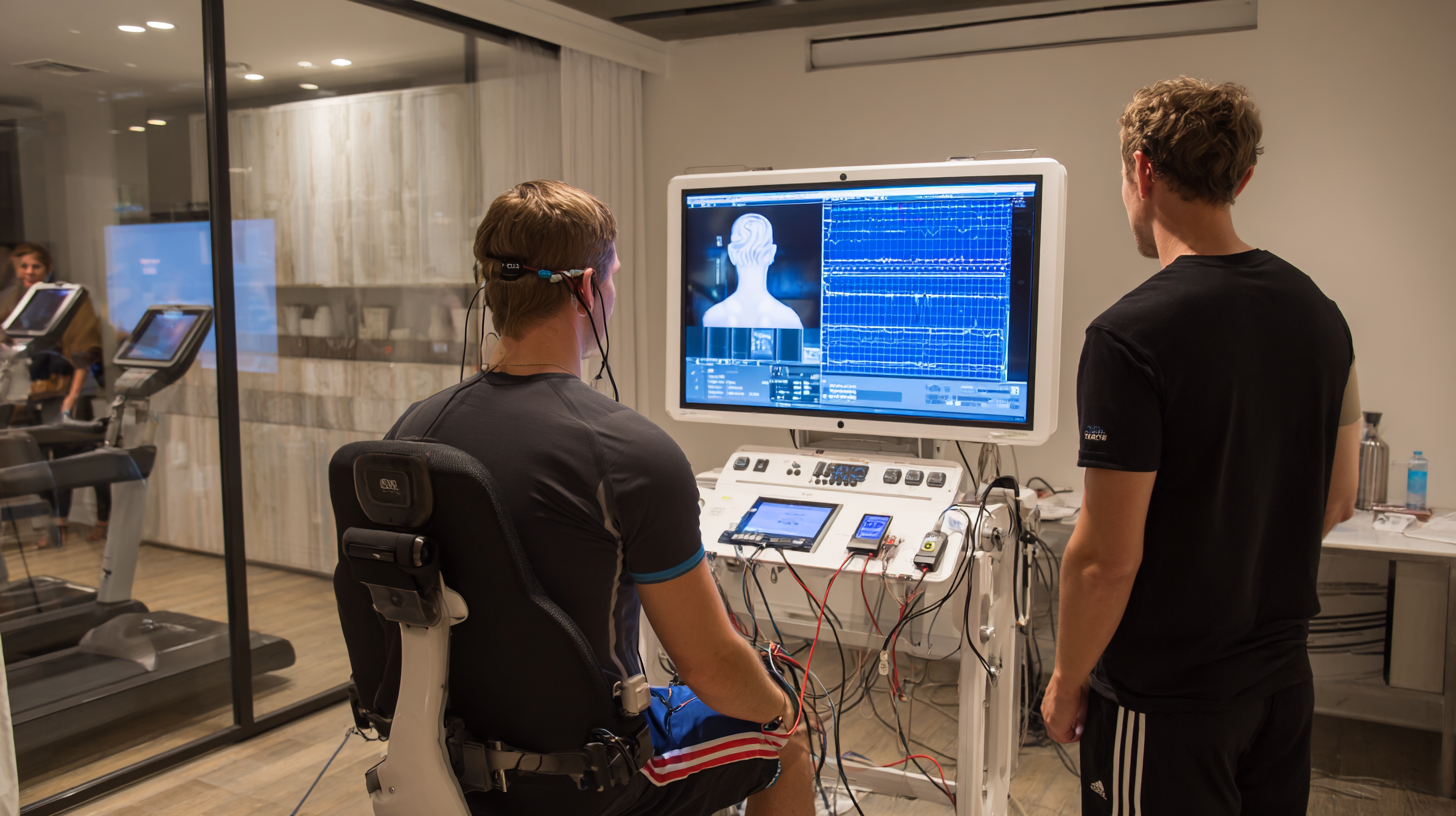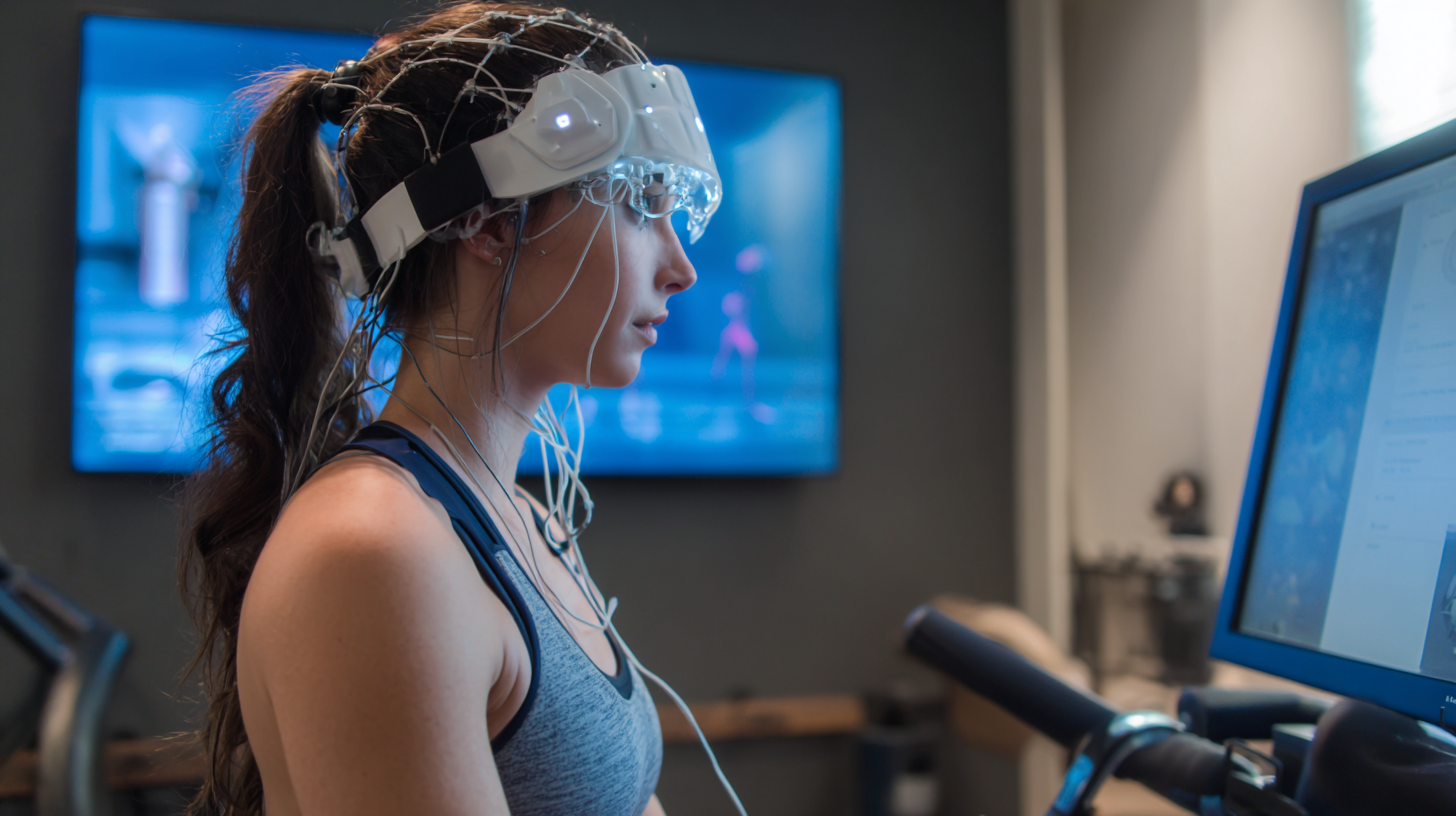Bankim Nagar, Siliguri, West Bengal
- GST NO. : 19BHDPS7640K1ZR
The Future of Biofeedback Equipment Transforming Wellness and Performance
As the wellness and performance industries continue to evolve, the role of biofeedback equipment is becoming increasingly pivotal. According to a recent report by the Global Wellness Institute, the biofeedback market is projected to grow at a compound annual growth rate (CAGR) of 8.5% from 2023 to 2030, fueled by rising awareness of mental health and the integration of technology in health applications. Biofeedback equipment, which harnesses real-time data to help individuals gain control over physiological functions, has shown significant potential in enhancing performance across diverse sectors, from sports training to stress management. With advancements in wearable technology and the growing demand for personalized health solutions, the future of biofeedback equipment promises not only to transform individual wellness journeys but also to redefine performance optimization strategies in various fields.

The Evolution of Biofeedback Technology in Wellness Practices
The evolution of biofeedback technology has marked a significant transformation in wellness practices, enabling individuals to harness their physiological responses in a more informed way. Biofeedback therapy, which aids clients in learning to control bodily functions such as heart rate and muscle tension, is becoming increasingly sophisticated. Recent research indicates that up to 83% of individuals experience improvements in stress management and overall wellness after engaging in biofeedback programs. This therapy, grounded in self-regulation, not only promotes physical health but also enhances mental well-being by providing real-time data about physiological states.

A notable advancement in this field is the integration of emotional tracking systems that connect mindful practices, such as calligraphy, with physiological responses. Unveiled earlier this year, studies show that such technologies significantly contribute to emotional regulation, offering new pathways for individuals seeking calmer states of mind amid hectic lifestyles. Moreover, the rising trend of biohacking—blending biology with technology—highlights the demand for cutting-edge tools that allow for personalized wellness strategies. As the evolution of biofeedback continues, maintaining a balance between technological innovation and holistic approaches will be essential for ensuring comprehensive health benefits.
Understanding the Mechanisms Behind Biofeedback Benefits
Biofeedback equipment has become a pivotal tool in enhancing wellness and performance, leveraging mechanisms that tap into the mind-body connection. At its core, biofeedback utilizes real-time data to help individuals gain control over physiological functions, such as heart rate, muscle tension, and brain wave patterns. A study by the American Psychological Association reported that biofeedback significantly reduces symptoms of anxiety and stress in 73% of participants, highlighting its effectiveness in promoting mental well-being. The technology educates users about their bodies, enabling them to make informed decisions regarding stress management and relaxation techniques.

Moreover, the physiological benefits of biofeedback extend into athletic performance, where optimizing mental and physical states is crucial. According to a report from the National Institutes of Health, athletes utilizing biofeedback tools showed a 20% increase in performance metrics over those who did not, illustrating its potential to enhance focus and resilience. As biofeedback equipment becomes more sophisticated, with features like neurofeedback and heart rate variability training, its mechanisms continue to transform the landscape of both wellness and competitive performance, providing unparalleled insights into individual health and response patterns.
Enhancing Athletic Performance Through Biofeedback Training
As the realm of athletic performance continues to evolve, biofeedback training stands out as a pivotal tool for athletes looking to gain an edge. By utilizing advanced biofeedback equipment, athletes can monitor physiological parameters such as heart rate variability, respiration patterns, and muscle tension in real-time. A report from the International Journal of Sports Physiology and Performance highlights that athletes who incorporate biofeedback techniques can improve their performance metrics by up to 22%. This remarkable enhancement stems from the ability to fine-tune mental and physical states, optimizing conditions for peak performance.
To harness the full potential of biofeedback training, athletes can start by identifying their optimal baseline readings during practice sessions. Maintaining regular sessions with biofeedback tools helps in recognizing patterns and triggers linked to stress and fatigue. For instance, when an athlete notices increased muscle tension during competition, they can apply relaxation techniques learned through biofeedback to regain composure.
Moreover, integrating mindfulness practices with biofeedback could yield significant benefits. Studies show that athletes who combine these methods are more likely to sustain focus and enhance their emotional regulation under pressure. Simple techniques such as deep breathing can lead to quick improvements in heart rate variability, enhancing overall athletic performance. By being more in tune with their bodies, athletes can make informed decisions that propel them towards their goals.
The Impact of Biofeedback Training on Athletic Performance
This chart illustrates the performance improvements of athletes who have integrated biofeedback training into their regimen. The data shows the average performance metrics across different athletic disciplines over a six-month training period.
Biofeedback Equipment: A Key Player in Stress Management
Biofeedback equipment has emerged as a crucial tool in the realm of stress management, transforming the way individuals approach mental well-being. According to a report from the American Psychological Association, stress-related disorders affect nearly 75% of adults in the United States, highlighting the urgent need for effective intervention strategies. With advancements in biofeedback technology, users can now monitor physiological functions such as heart rate, muscle tension, and skin temperature, gaining insights into their stress levels and learning to control their responses. Research indicates that individuals who engage in biofeedback sessions experience a significant reduction in stress levels, with studies showing a decrease in perceived stress by up to 40% after regular sessions.
Moreover, the rise of wearable biofeedback devices has made it easier than ever for people to incorporate stress management practices into their daily routines. A market analysis by Grand View Research predicts that the biofeedback market will reach $1.87 billion by 2026, driven by the growing awareness of mental health and increased adoption of holistic wellness solutions. As biofeedback equipment continues to evolve, its role in stress management is likely to expand, offering innovative techniques to help individuals achieve a balanced state of mind and improved performance in both personal and professional realms.
Integrating Biofeedback into Daily Life for Optimal Well-Being
Integrating biofeedback into daily life is becoming increasingly vital for those seeking optimal well-being. According to a report from the Global Market Insights, the biofeedback market is projected to exceed $1.5 billion by 2026, reflecting a growing recognition of its benefits for mental and physical health. Biofeedback devices help users gain awareness of physiological functions such as heart rate and muscle tension, allowing them to exert control and improve their health outcomes. This integration not only enhances stress management but also aids in performance optimization, making it a valuable tool in both personal and professional settings.
Recent studies indicate that individuals who incorporate biofeedback into their routines experience significant improvements in anxiety levels, stress resilience, and overall life satisfaction. For example, a 2022 study published in the Journal of Health Psychology found that participants using biofeedback techniques reported a 30% reduction in stress and a 25% increase in productivity. As biofeedback technology evolves, more people are adopting wearable devices that seamlessly blend into their lifestyles, enabling real-time feedback and fostering a proactive approach to health. This shift is reshaping the way we view wellness, emphasizing the importance of self-awareness and personal agency in achieving optimal well-being.

